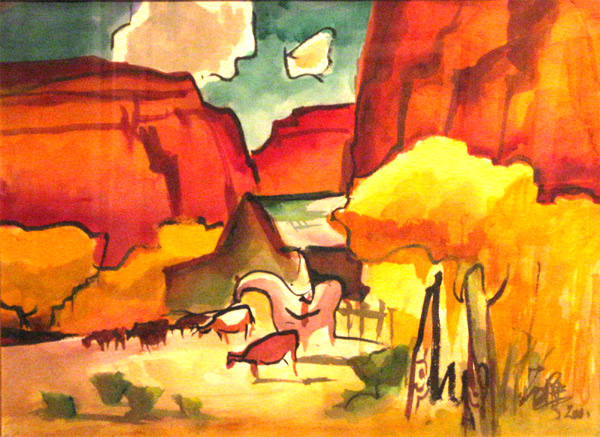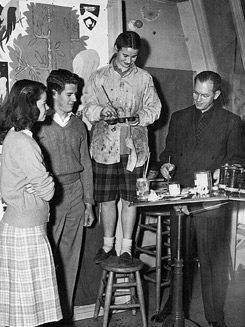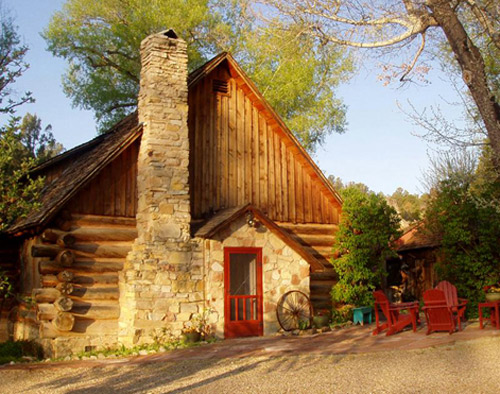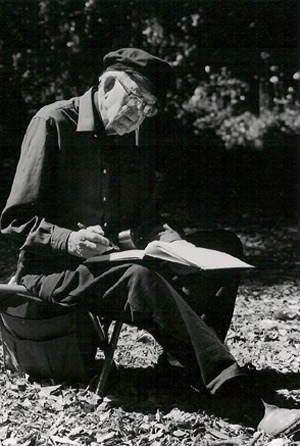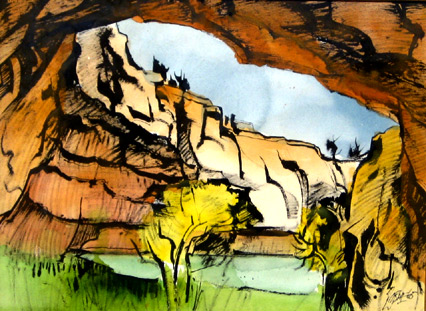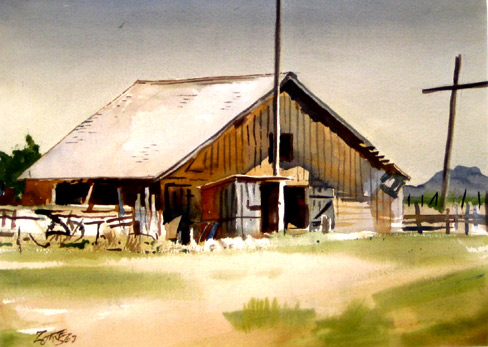Cars, Stars and Guitars
 Monday, July 25, 2011 at 9:42PM Tweet
Monday, July 25, 2011 at 9:42PM Tweet By Donna Poulton
For Arizona-based artist, Dave Newman, the highways of the West are a treasure trove of highway culture memorabilia. His collage work is heavily influenced by the vernacular images of the West: signs, buildings, the open road, music and advertisements.
 “Surreal Utah” Credit: Dave Newman
“Surreal Utah” Credit: Dave Newman
Fender Guitars, Warner Brother Records and High West Distillery are just a few of the clients who have commissioned Dave Newman’s collage work.
 Working on a commission for Ajo als Restaurant Credit: Dave Newman
Working on a commission for Ajo als Restaurant Credit: Dave Newman
Dave’s artistic process begins with a drive down a local highway or a blacktop road trip, a visit to a flea market or a country antiques store, to find objects and photo opportunities that may spark an idea for his next big project.
 “Bronco” Credit: Dave Newman
“Bronco” Credit: Dave Newman
Newman notes: “along with whatever items I may have discovered in my travels, my painted collage constructions are made up of my own photographs, postcards and maps from my collection, with acrylic paint and found wood and metal items added.”
 “Motels” Credit: Dave Newman
“Motels” Credit: Dave Newman
The desert landscape, “Kitchy” roadside attractions, and what used to be called motor courts are rapidly disappearing in America, he says.
 “Regular” Credit: Dave Newman
“Regular” Credit: Dave Newman
Mixing media is Newmans’s way of trying to “preserve the locations, imagery, and essence for people who remember these things, as well as serving as a kind of historical marker for those too young to have had the opportunity to experience the era.”
 “Garage, Café and Motel” Credit: Dave Newman
“Garage, Café and Motel” Credit: Dave Newman
At first glance, his collage work seems fragmented, as though disparate pieces are placed randomly on a panel. But as the viewer looks more closely, the elements become a topography of our collective memory of the western landscape.
 Neon Cemetery and Dave Newman: Credit Dave Newman
Neon Cemetery and Dave Newman: Credit Dave Newman
Dave’s work can be found in many private collections and in his new exhibition.
“Cars, Stars and Guitars,” opens at the Meyer Gallery in Park City, Utah in the 5th of August.
 "Desert Tour" Credit: Dave Newman
"Desert Tour" Credit: Dave Newman
 Credit: Phoenix Home and Garden with a Dave Newman collage
Credit: Phoenix Home and Garden with a Dave Newman collage



















